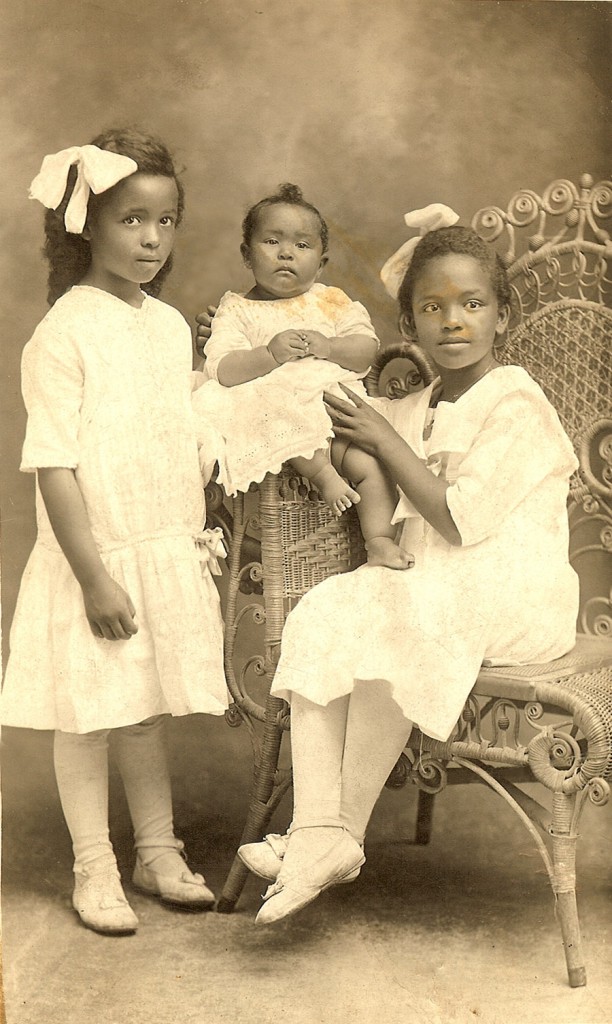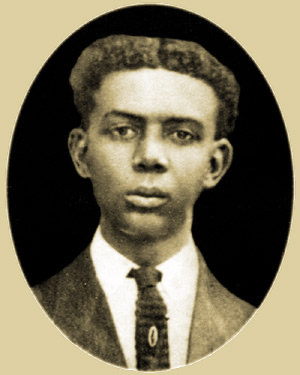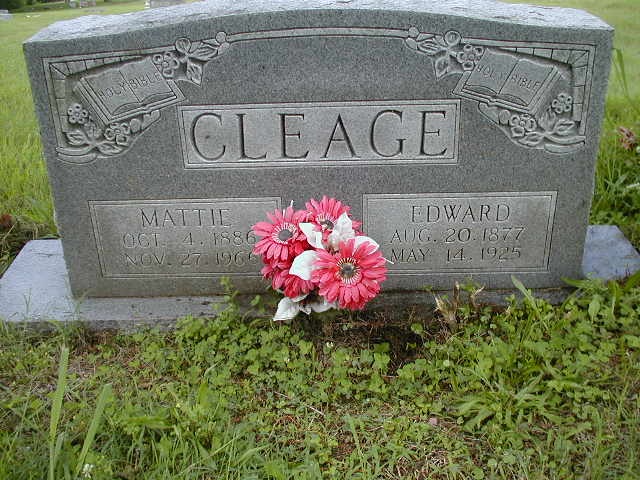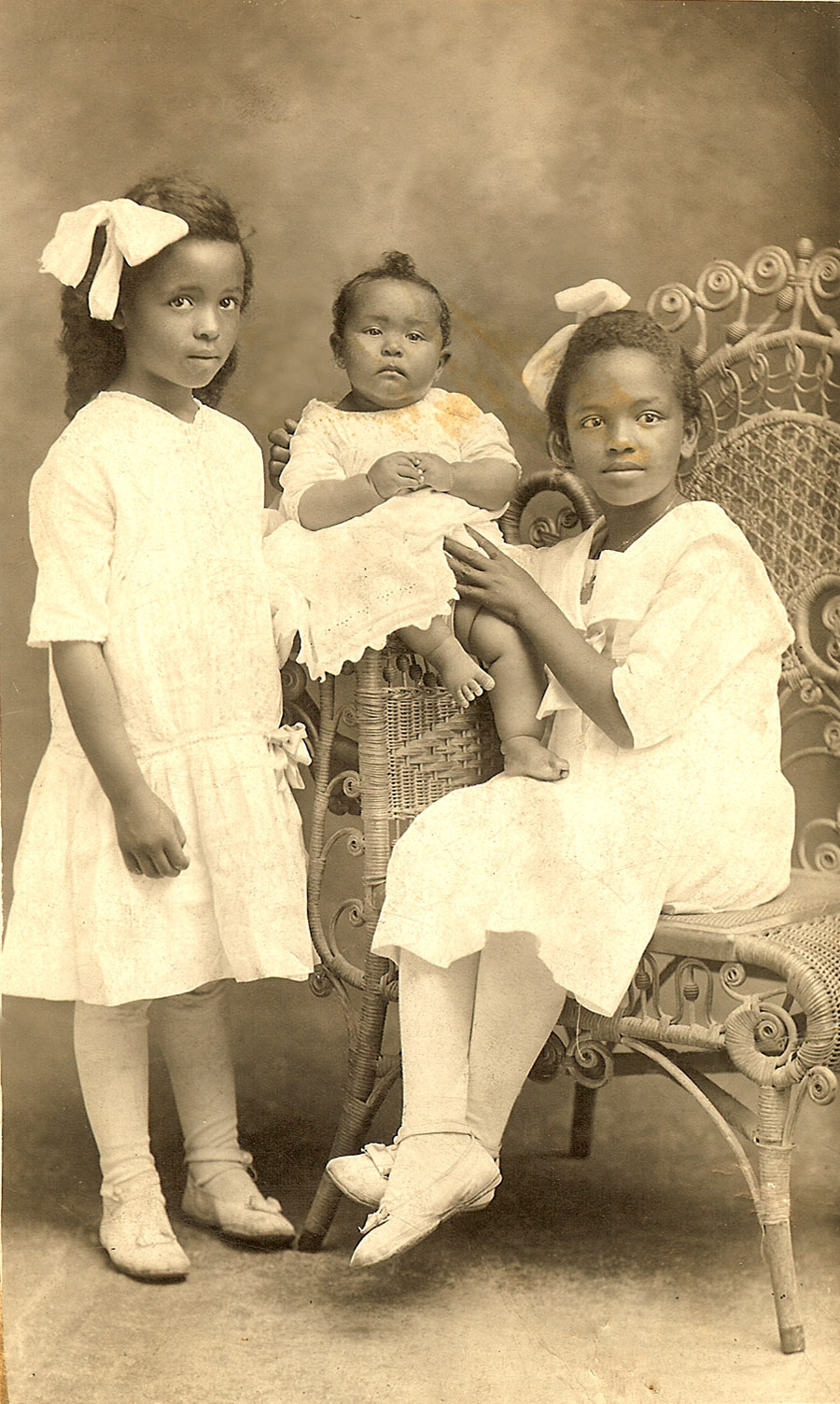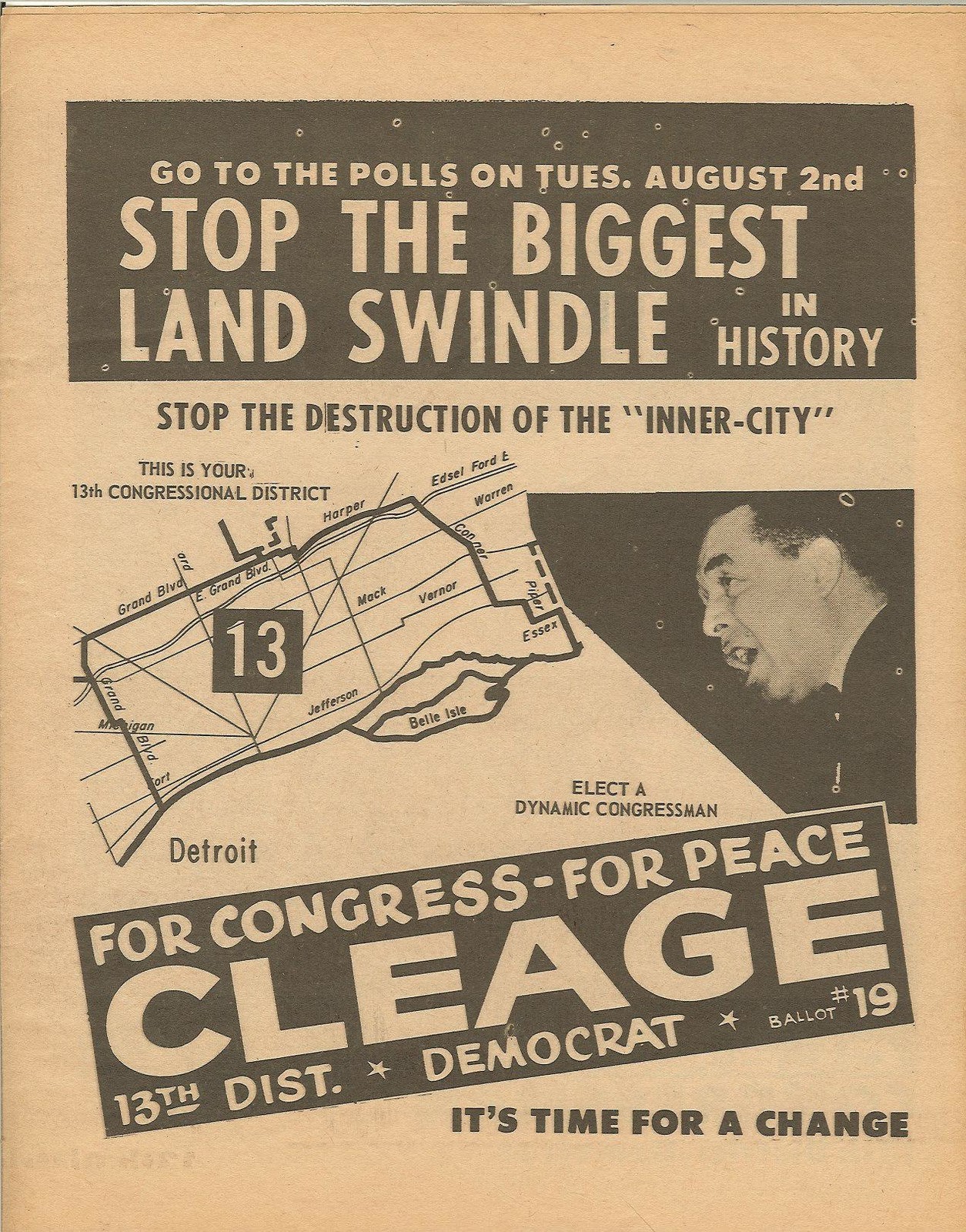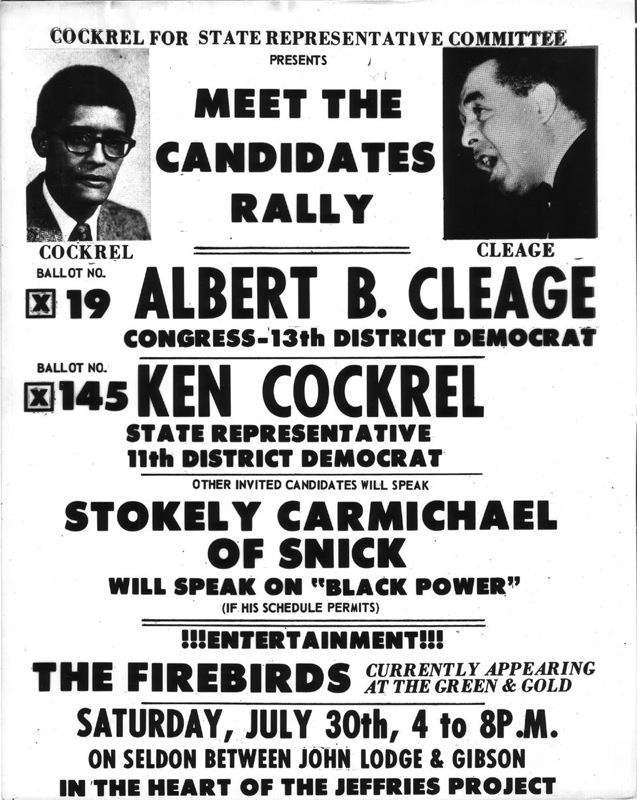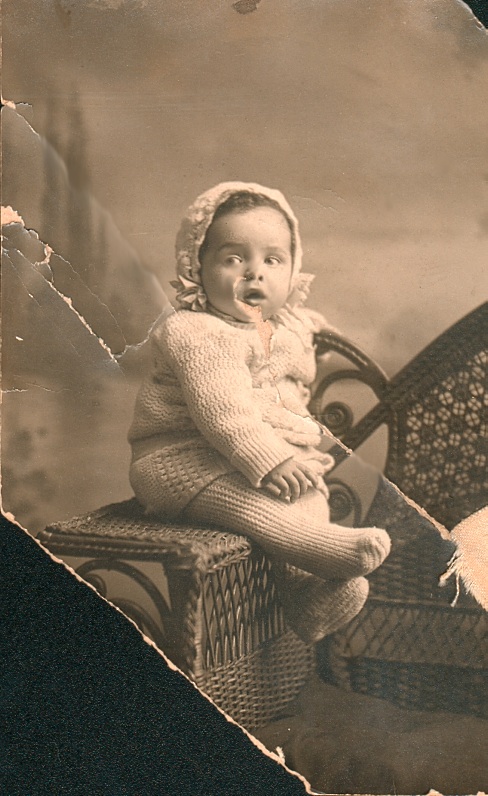My Aunt Gladys Cleage Evans drew this pencil sketch of me after dinner at my grandmother Cleage’s dining room table. I did a sketch of her at the same time. It has been (thankfully) lost. At some point I tore the picture out of my journal notebook and glued it into a scrapbook. This was before I knew what glue can do. I’ve cleaned it up some. Many lively political discussions took place around that table. Click for other Sepia Saturday offerings.
Category Archives: Cleages
Gathering at my Cleage grandparents 1955
This isn’t Thanksgiving. I don’t see a turkey. Most of the cousins are missing. But it’s the only family dinner I could find that wasn’t in the summer for this side of the family. My grandmother at the end of the table in photo one and my grandfather at the end in the other. My father chewing next to my grandfather.
“Memories to Memoirs Chapter Two Early Years of Life”
Edward Cleage was my grandfather, Albert Cleage’s brother. This post is a chapter of a memoir written by his daughter, Beatrice in 1990.
Memories To Memoirs
Written in 1990
By Beatrice Cleage Johnson
Chapter 2 – Early Years of Life
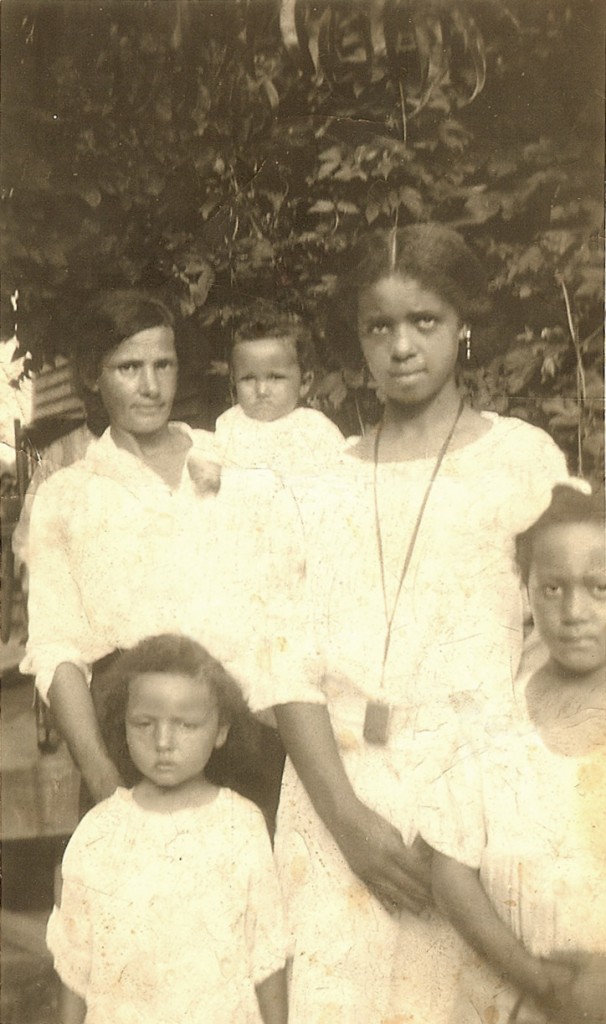
1926 – I remember the early years of my life living at 216 Ridge Street. We used wood and coal stoves for heating and cooking. I will never forget the range stove that my mother cooked on. She made biscuits every morning for breakfast. There was a warmer at the top of the stove for left overs. I would always search the warmer for snacks. We had an outside toilet. Everyone that we knew had these, so we thought this was it. We never dreamed of ever having inside plumbing.
We had a water hydrant in the front yard and every night it was my job to fill the water buckets which had stainless steel dippers in them. My sister also helped with the chores. My other job was to clean the lamp chimneys. We used oil lamps. Momma always inspected them to see if they were clean. I decided then, if I ever made any money I would have electricity put in our house. And I did. I would babysit during the summers and save my money.
I have always loved poetry. I learned many poems and stories from my mother and sisters, such as “Little Boy Blue” and “Little Red Riding Hood”. I think my favorite food was any kind of fruit. I was always happy to see Summer, when the apples and peaches were plentiful. I always looked forward to Christmas. We never saw any oranges until then. I remember my first doll. It had a china head and straw body. I loved it so much. Momma always made a special white coconut cake for Christmas, which I looked forward to. She made other pies and cakes, but the coconut was my favorite. We didn’t get too many toys for Christmas, but my sisters and I enjoyed everything we got for Christmas.
My father became ill and my mother was to be the sole support of the five girls. I was six years of age when my father passed away in 1926. My youngest sister, Juanita, was three years of age and she didn’t remember him, but I did. After he died my uncles took the two older sisters, Helen and Alberta, to Detroit to live with them. Alberta stayed and finished high school there, but Helen came back home and helped Momma care for the three of us. Ola, Juanita and myself went to high school here.
We always celebrated the holidays. Thanksgiving was very special as my birthday would sometimes come on Thanksgiving Day. We always had special food on these days. Pies, cakes, chicken, rabbit. On Halloween we always dressed in our older sister’s and mother’s clothes. One of the main pranks the boys would do was to push the outside toilets over. We used to beg them not to push ours over. In those days, there was no trick or treat. It was all tricks. Easter was also special. Momma would make us a new dress for Easter, and Helen always bought me black patent leather slipper.
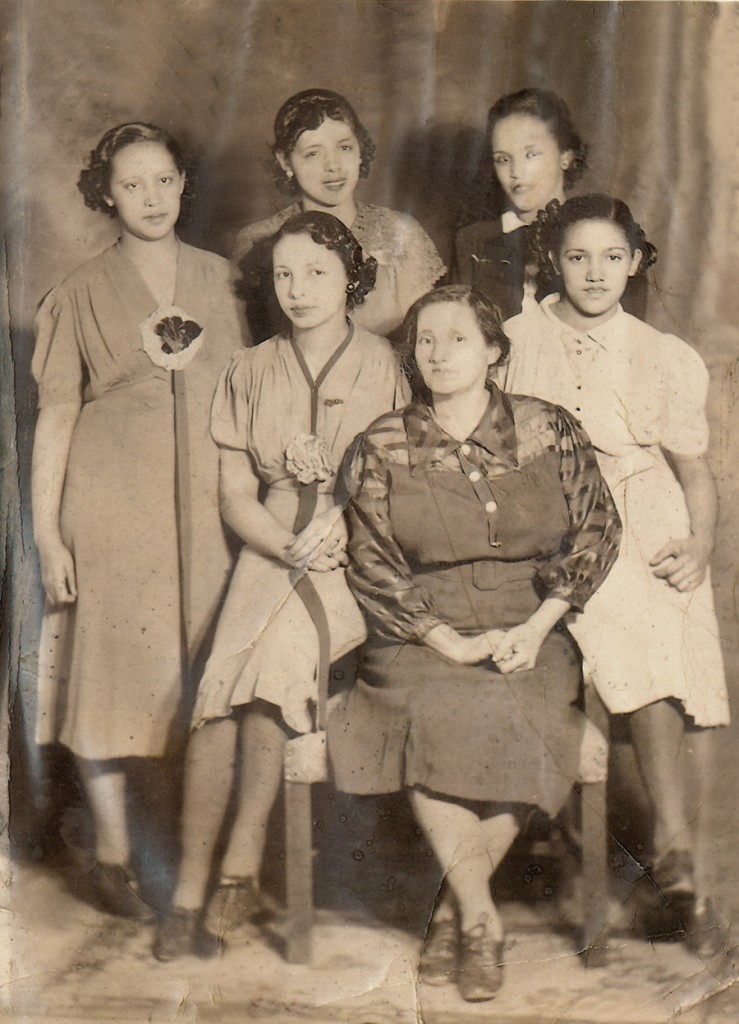
Mattie (Dotson) Cleage and daughters
Edward and Mattie Cleage
Uncle Ed’s Daughters 1917
These are three of Edward and Mattie (Dotson) Cleage’s six children. Alberta was born in 1908, baby Ola in December of 1916 and Helen in 1910. There was an older brother, Lawrence, who died at a year old. Two more daughters, Beatrice and Juanita, were born later. Edward was the only child of Lewis and Celia (Rice) Cleage to remain in Athens, Tennessee. His other four siblings moved first to Indianapolis, IN and then to Detroit, MI. Edward suffered from rheumatoid arthritis and died at 46, when his youngest daughter was four years old. For more Sepia Saturday offerings.

More from Elections of yesteryear – 1965 Cleage for Council
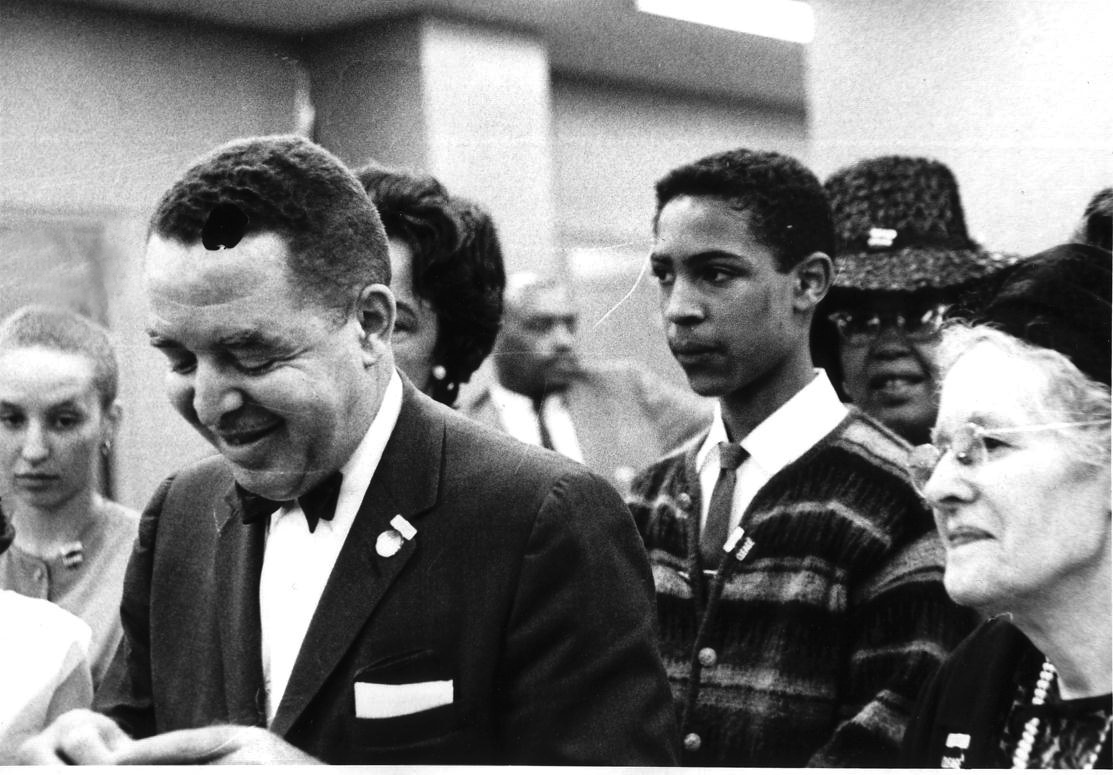 Family and church members accompanied my father as he signed up to run for City Council in Detroit, MI in 1965. We all have on our Cleage for Council buttons. That’s him in the front with the bow tie. I am looking melancholy over on the left. My cousin Ernie is in the striped sweater. Rev. Hill’s ( assistant pastor) wife in the back with the hat. My grandmother (Pearl Cleage) looking happily proud on the right. This followed the Freedom Now Party loss in 1964 and the 3 + 1 campaign in 1963 and preceded the run for the 13th District congressional seat in 1966.
Family and church members accompanied my father as he signed up to run for City Council in Detroit, MI in 1965. We all have on our Cleage for Council buttons. That’s him in the front with the bow tie. I am looking melancholy over on the left. My cousin Ernie is in the striped sweater. Rev. Hill’s ( assistant pastor) wife in the back with the hat. My grandmother (Pearl Cleage) looking happily proud on the right. This followed the Freedom Now Party loss in 1964 and the 3 + 1 campaign in 1963 and preceded the run for the 13th District congressional seat in 1966.
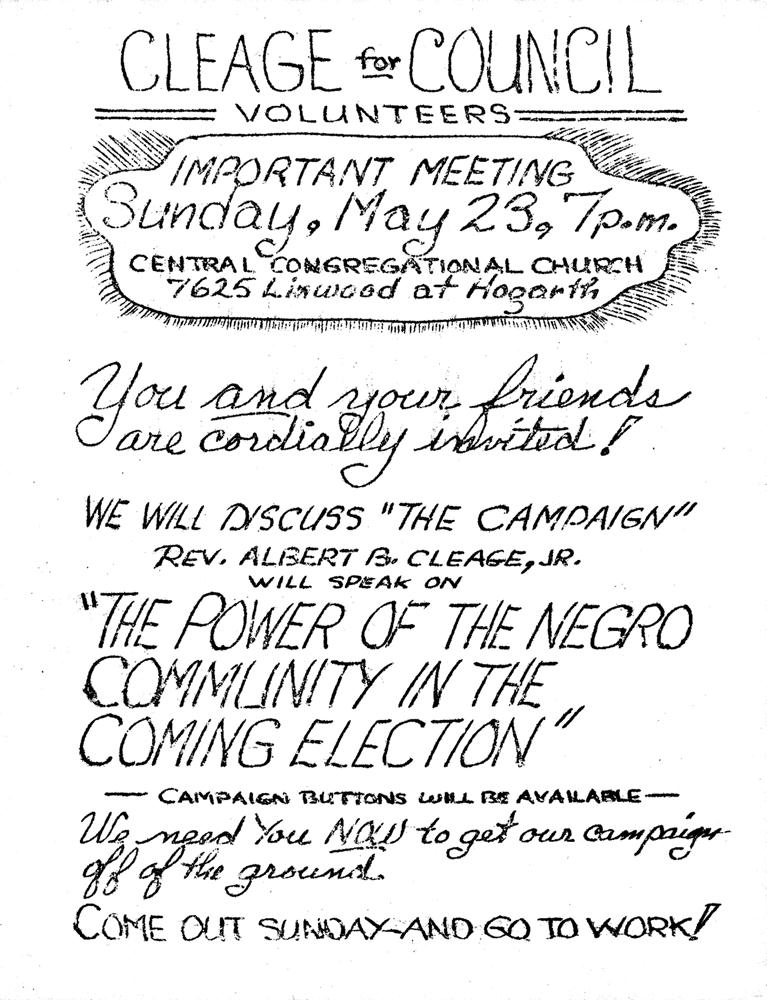
These campaigns were run as educational, not to win. Not that that wouldn’t have been a welcome surprise. My family talked politics morning noon and night. Not just talked, lived. Two of my uncles started a printing business and for years the family and friends put out The Illustrated News, an eight sheet pink paper where they wrote about the issues of the day, mostly local but as this was the time of the civil rights movement, bombs and demonstrations and riots, there was also some national news. I remember riding in sound cars, passing out information at the polls, silk screening posters, leafleting. The summer of 1966 I spent lots of time with Jim, who is now my husband, campaigning. We capped it off by attending a “Victory Party” for Ken Cockrel, who hadn’t won. Those were the days my friend…
Elections Past
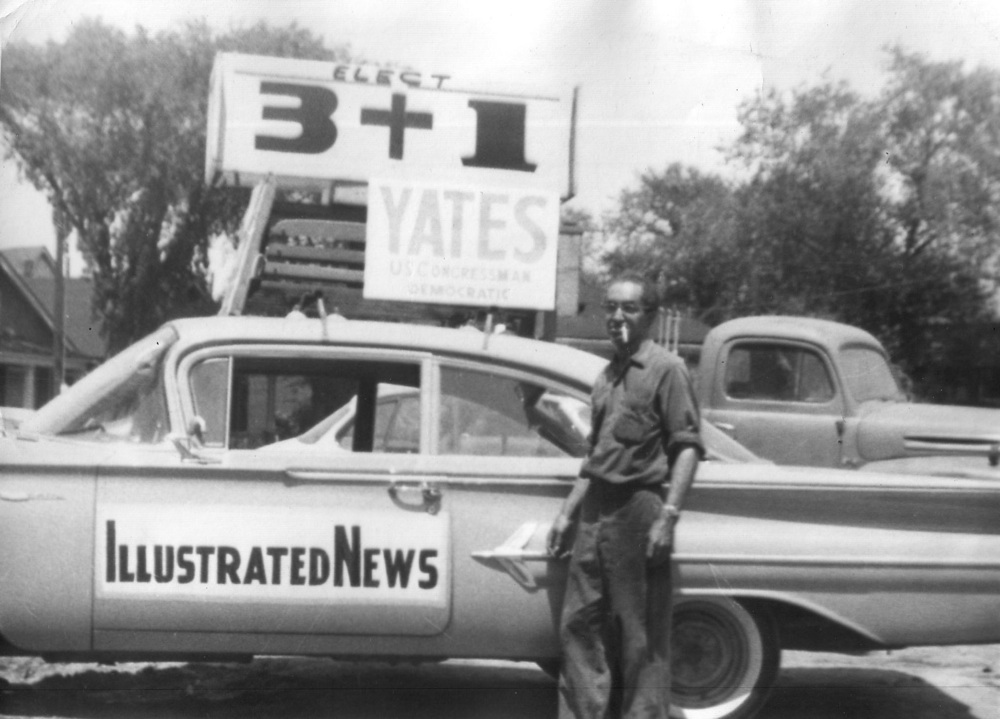 My uncle Hugh Cleage standing by the sound car he rigged up for an election in 1962 Detroit. My sister, Aunt Gladys and I spent hours in that car riding through our community.
My uncle Hugh Cleage standing by the sound car he rigged up for an election in 1962 Detroit. My sister, Aunt Gladys and I spent hours in that car riding through our community.
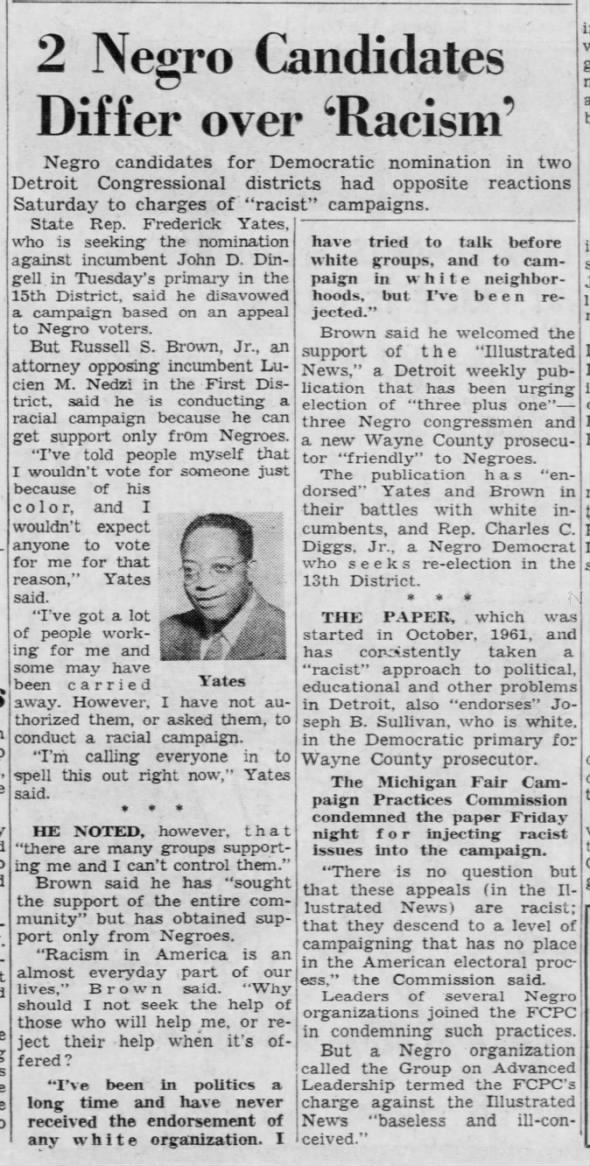 yates for congress, disavows illustrated news support 05 Aug 1962, Sun Detroit Free Press (Detroit, Michigan) Newspapers.com
yates for congress, disavows illustrated news support 05 Aug 1962, Sun Detroit Free Press (Detroit, Michigan) Newspapers.com
Just Tell The Men – A short story by Henry W. Cleage
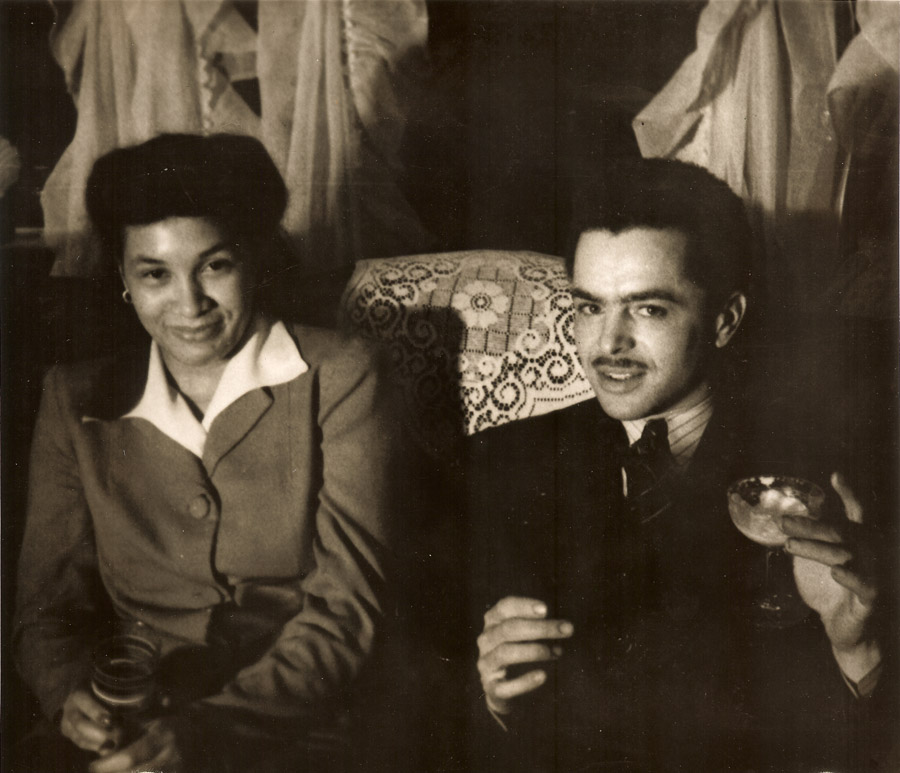
“After all,” said George, waving his drink around impressively, “a rolling stone is worth two bushes.” He finished his drink and swaggered to the couch and sat down.
This bit of logic gave our little party pause. For who could deny it?
George and his wife, Vel, Louis and his wife, Melba, and I and my wife, Barbara, and Paul and his girl, Gloria, were gathered together, as was our custom on Saturday nights at George’s house. It had started out like an enjoyable evening. Plenty of liquor and good friends. But then somehow the conversation wiggled around to the girls’ favorite topic. To wit: Why Gloria should not marry Paul. Of course we fellows had a position to defend and we argued, to wit: vice versa.
You see the argument wasn’t really about Gloria and Paul. We all knew they would marry as soon as she graduated from Wayne U. this coming June. The girls just used this discussion as an excuse to get their licks in concerning our husbandly weaknesses.
Like what Barbara said, “How can she marry him?” she shrieked, “always buying boats and fishing poles and shotguns and going away for two months vacations. He’ll never save any money.”
This boat business was their latest and most intense beef. We four fellows had bought a small cabin cruiser together. Everything was fine when we all dressed up in yachting caps and cruised along the Lake Shore Drive and around the Belle Isle Bridge. But when we started going up into the lakes fishing, the girls suddenly tired of the sport. Besides no one could recognize them from the bridge anyway.
And so as the liquor flowed, our little party grew tense. Just like the last weeks’ party and the one before that. Everyone was swelling up. Faces were getting that strained look. Cords were standing out in the girls’ necks as they screamed their illogical accusations. The more they drank, the louder and higher they shouted and also vice versa. They weren’t the sweet little girls we used to know.
We men, I realized, were nowhere. We had logic, truth and compassion on our side. The girls had volume. And what availeth logic against a woman’s hard breathing, shrill and rasping emotional tantrum? I was drinking to escape when George dropped his atom bomb amongest them. You could almost hear the air escaping from their sails.
“I repeat,” said George, pressing home his point, “A rolling stone is worth two bushes.” He blew out a cloud of cigarette smoke. “Even with moss on them,” he added.
The girls looked dazed. Gloria sniffed her drink. She wasn’t married yet.
“Umm,” said Melba pointedly.
Ah,” said Barbara shrewdly.
“Huh?” said Paul. He wasn’t married yet either.
“Of course, as you say,” George continued thoughtfully, “it’s better to have loved and lost, than never the twain shall meet.” He poured himself a drink and I noticed that his hand was shaking. It was strong medicine that he was using, but the case called for it.
“Yeah,” said I.
“Yeah,” said Louis.
“Huh,” said Paul, he wasn’t married yet.
It was unanswerable logic that George was uttering. This was plain to Louis and me in our condition. Maybe Paul too. However, the girls weren’t quite convinced. Their condition was comparable though.
“That’s silly,” said Vel.
George blanched.
“Yeah,” said Melba.
“Yeah,” said Barbara.
“Yeah,” said Gloria. She wasn’t married yet but she was a woman.
“Silly?” George tried to sound preposterous and failed miserable. He sounded silly.
“Who ever heard of two bushes with moss on them?” asked Vel, looking around for help.
“Yeah,” said Barbara shakily.
“Yeah,” said Melba in a daze.
“Yeah,” said Gloria belligerently, she still wasn’t married yet.
The color was coming back to George’s face. “Have you ever heard of one bush with moss on it?” he asked, raising one (left) eyebrow. It was a stunning question.
Vel was plainly confused. She looked around for help, but the girls were very busy drinking and looking the other way. “Why y-yes,” she stammered.
“Just like I said,” shouted George triumphantly. “What’s sauce for the goose is nine sour grapes in time.”
“Yeah,” said Louis.
“Sour grapes, indeed,” said Barbara fighting a losing battle.
She looked heavily at Melba. Melba looked heavily at Vel, who in turn, looked heavily at Gloria, who in turn looked heavenly. Gloria was single.
They finished their drinks with four gulps and refilled. They hitched themselves closer together. They looked at each other again, this time wild eyed. They had no more to say.
Paul was looking wild eyed too. So we hurried him into the kitchen before he queered the works. We wanted to examine this thing we had discovered, too.
“Sensational,” said Louis, looking admiringly at George, who was leaning against the refrigerator with his hand on his navel, like Napoleon.
Uncanny,” said I, dancing with glee.
“What?” said Paul.
“It will revolutionize men,” said George modestly, looking narrowly into the distance.
“It will revolutionize women,” said Louis in awe.
“It will revolutionize the world,” said Paul who wasn’t married yet.
George held up his hand for silence. “Tell them,” he began scowling with the weight of his message.
“Tell who? Asked Paul.
“Mankind,” shouted George, irked at this ignorance. “Mo,” he retracted, “Just tell the men. Tell them,” he began again, “never to make the mistake of arguing with a woman logically.”
“Hear, hear,” cried Louis and I.
“Hear, hear,” cried Paul, seeing the light.
“For in that direction,” he continued, “madness lies.” He was pacing up and down before us now, filled with the message. “We must talk trash,” he said
“Yes, trash,” he thundered. “Plain, unadulterated trash.” He was winded.
I went to the kitchen table and poured four drinks. With a certain dignity I gave to each his own. We touched glasses.
George spoke. “I firmly believe,” he said firmly, “that we men can be as silly as the next woman.”
“If not sillier,” said Paul. He wasn’t married yet.
We drank.


